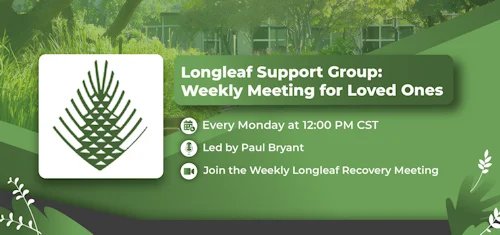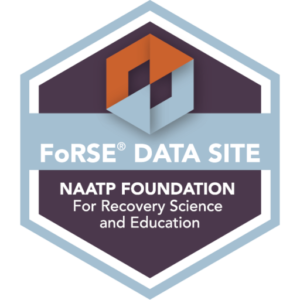When facing substance abuse or addiction, one of the first and most critical decisions you’ll need to make is choosing between inpatient and outpatient treatment.
Both options offer unique advantages and challenges. The right choice for an individual depends on a variety of personal, medical, and logistical factors. Understanding the differences between inpatient and outpatient rehab programs can help individuals and their families make informed decisions on the path to recovery.
What is Inpatient Treatment?
Inpatient treatment, often referred to as residential treatment, involves living at a rehab facility for the duration of the program. Individuals receive around-the-clock care in a structured, supportive environment that removes them from the triggers and stresses of daily life.
Inpatient programs typically include the following treatment services:
- Medical detox (if necessary)
- Daily therapy sessions (individual and group)
- Behavioral therapies, such as CBT or DBT
- Holistic care like yoga, nutrition counseling, and fitness
- Peer support and education
- Supervised medication management
Stays can range from 28 days up to 90 days or longer. This depends on the severity of the addiction and the individual’s progress.
What is Outpatient Treatment?
Outpatient treatment allows individuals to live at home while attending scheduled treatment sessions at a rehab center. This model is best suited for those with a strong support system, less severe addictions, or who need to balance treatment with daily responsibilities.
Outpatient programs vary in intensity:
- Standard Outpatient Program (OP): A few hours of therapy per week.
- Intensive Outpatient Program (IOP): Often 9-12 hours of treatment per week.
- Partial Hospitalization Program (PHP): 20+ hours of care weekly, sometimes referred to as “day treatment.”
Outpatient treatment focuses on therapy, education, and relapse prevention. It often integrates family support and medication-assisted treatment.
Key Differences Between Inpatient and Outpatient Programs
While both inpatient and outpatient programs aim to help individuals achieve lasting recovery, they differ in several important ways:
| Feature | Inpatient Rehab | Outpatient Rehab |
| Living Arrangements | Individuals live at the facility | Individuals live at home |
| Intensity of Care | High (24/7 support) | Moderate to high (depending on the program) |
| Structure | Highly structured daily schedule | Flexible schedule |
| Duration | Typically 30-90 days or more | Ranges from weeks to several months |
| Cost | Generally higher | More affordable |
| Best For | Severe addiction, people with co-occurring disorders | Mild/moderate addiction, people with strong support system |
Pros and Cons of Inpatient Treatment
Pros:
- 24/7 medical and emotional support
- Structured environment free from external triggers
- Intensive therapy and group support
- Sole focus on recovery
- Greater success rates for individuals with severe or long-term addiction
Cons:
- Higher cost compared to outpatient treatment
- Requires taking time away from work and/or family
- Less flexibility
- May feel isolating for some individuals
Pros and Cons of Outpatient Treatment
Pros:
- Maintain daily responsibilities (work, school, family)
- Typically more affordable
- Flexible scheduling
- Support from family and community while in treatment
Cons:
- Potential exposure to triggers
- Less supervision and accountability
- Requires strong motivation and self-discipline
- May not be sufficient for individuals with severe addiction or dual diagnosis
Who Is Best Suited for Inpatient Rehab?
Inpatient rehab is often recommended for individuals who:
- Have a long history of substance abuse
- Experience severe withdrawal symptoms
- Have co-occurring mental health disorders
- Have previously relapsed after outpatient treatment
- Lack a safe or stable home environment
- Require intensive medical or psychiatric care
This level of care ensures a full immersion in recovery with constant support, reducing the chances of early relapse.
Who Should Consider Outpatient Rehab?
Outpatient rehab may be ideal for individuals who:
- Have a mild to moderate substance use disorder
- Are highly motivated to recover
- Have a supportive home life
- Need to maintain employment or family commitments
- Have already completed inpatient rehab and need continuing care
Outpatient rehab can also be a great step-down option for those transitioning out of residential treatment.
Cost Comparison: Inpatient vs. Outpatient Rehab
Cost can be a significant factor when choosing a treatment program.
Inpatient treatment typically includes room and board, 24/7 supervision, meals, and intensive therapy. The average cost ranges from $10,000 to $30,000 per month, and luxury centers may charge significantly more.
Outpatient treatment is generally more budget-friendly. Prices can range from $1,000 to $10,000 per month, depending on the frequency and intensity of services.
Most insurance providers cover both inpatient and outpatient services, though the level of coverage may vary. It’s essential to verify your insurance benefits and coverage before beginning treatment.
Duration and Intensity of Care

Inpatient treatment is the most intense and immersive treatment option. Patients may participate in multiple therapy sessions daily and will be continuously monitored.
Outpatient treatment ranges in intensity. A standard outpatient program might only involve a couple of hours a week, while a PHP could feel similar to inpatient care but without the overnight stay.
Ultimately, the most effective intensity of treatment depends on the individual’s addiction severity, mental health needs, and recovery goals.
Level of Support and Supervision
Inpatient programs offer constant supervision. This helps make them a safe choice for individuals at risk of relapse, self-harm, or experiencing medical complications during withdrawal.
Outpatient programs rely heavily on personal accountability and external support systems. While clinical staff is available during scheduled hours, the individual is largely responsible for staying on track and maintaining responsibility between sessions.
Flexibility and Daily Life Responsibilities
A major advantage of outpatient rehab is its flexibility. Patients can attend treatment while still:
- Working or attending school
- Caring for children or other family members
- Participating in community activities
In contrast, inpatient care requires a temporary pause from these responsibilities. This can be challenging for some, but beneficial to others who need full focus on recovery.
How to Choose the Right Treatment Option
Selecting the appropriate level of care is a highly personal decision. It’s important to ask yourself or your loved one:
- How severe is the substance use disorder?
- Have previous treatment attempts been unsuccessful?
- Is there a safe and supportive home environment and/or support system?
- Are there any co-occurring mental health conditions?
- How much time can be dedicated to treatment?
It may help to consult a licensed addiction professional for an assessment. They can guide you in finding the best treatment path based on clinical needs and lifestyle factors.
Transitioning Between Inpatient and Outpatient Care
Many individuals begin with inpatient treatment and transition to outpatient care as they progress. This step-down approach allows for continued support while reintegrating into daily life.
Common Transitions in the Continuum of Care
Recovery from substance use disorder is rarely a one-step process. Many individuals benefit from a continuum of care, moving through various levels of treatment as their needs evolve. These transitions are designed to provide the right balance of structure, support, and independence at each stage of the healing journey.
These are some of the most common and effective treatment transitions:
Inpatient → Partial Hospitalization Program (PHP) → Intensive Outpatient Program (IOP) → Outpatient Program (OP)
This gradual step-down approach allows individuals to move from highly structured care to greater independence while still maintaining clinical support.
- Inpatient: The journey often begins with residential treatment, where individuals live on-site and receive 24/7 medical and therapeutic care. This phase focuses on detox, stabilization, and intensive therapy.
- Partial Hospitalization Program (PHP): After inpatient care, individuals may transition to a PHP, which offers comprehensive treatment during the day (typically 5 to 6 days a week, for six or more hours per day). But the program allows them to return home or to a sober living facility at night. PHP continues the intensity of the person’s therapy while beginning to reintroduce personal responsibility and freedom.
- Intensive Outpatient Program (IOP): As stability improves, clients move into IOP, which usually involves 3-5 days of treatment per week for 3-4 hours a day. This allows individuals to begin working or attending school part-time while still participating in structured therapy and support groups.
- Outpatient Program (OP): The final clinical phase typically involves weekly or bi-weekly sessions focused on relapse prevention, life skills, and ongoing counseling. This stage helps individuals fully reintegrate into daily life while staying connected to professional support.
Inpatient → IOP with Sober Living
For those without a stable or supportive home environment, transitioning from inpatient rehab directly into a sober living home while participating in an intensive outpatient program can be highly beneficial.
Sober living homes provide a drug- and alcohol-free living space where residents follow house rules, attend meetings, and are held accountable through drug testing and peer support. Combining IOP with sober living ensures that individuals receive continued therapy and support while building essential life skills in a safe, structured environment. This setup is ideal for those not yet ready to return home but who don’t need the full intensity of inpatient care.
Inpatient → Outpatient with Aftercare and Support Groups
Some individuals may step down directly from inpatient rehab into standard outpatient care while also participating in a personalized aftercare plan. This often includes weekly counseling sessions, group therapy, and access to peer-led support groups such as Alcoholics Anonymous (AA) or Narcotics Anonymous (NA), SMART Recovery, or other community-based groups.
Aftercare planning may also involve ongoing medication management, family therapy, vocational counseling, or relapse prevention strategies. This path is particularly helpful for individuals with strong support systems at home and lower risk of relapse but who still need structured guidance during early recovery.This continuum of care is designed to reduce relapse risk and ensure long-term success.
The Importance of Personalized Treatment Plans

No two individuals experience addiction in the same way. That’s why personalized treatment plans are essential. A customized treatment plan takes into account:
- Type and severity of addiction
- Mental health status
- Physical health and history
- Family dynamics
- Work and life obligations
- Recovery goals
Whether a person decides to participate in an inpatient or outpatient program, their treatment plan should evolve as the individual progresses through recovery, addressing changing needs at each stage.
Getting Help: Taking the First Step Toward Recovery at Longleaf Recovery in Alabama
If you or a loved one is struggling with substance abuse, you don’t have to face it alone. The first step is often the hardest — but it’s also the most important. Let us walk with you on your journey to healing and hope
At Longleaf Recovery in Alabama, we offer outpatient treatment options customized to meet your unique needs. Our compassionate team of medical and behavioral health professionals is here to support you every step of the way. We’ll help you build a solid foundation for lasting recovery.
Contact Longleaf Recovery today to schedule a confidential assessment and explore which treatment option is right for you.








